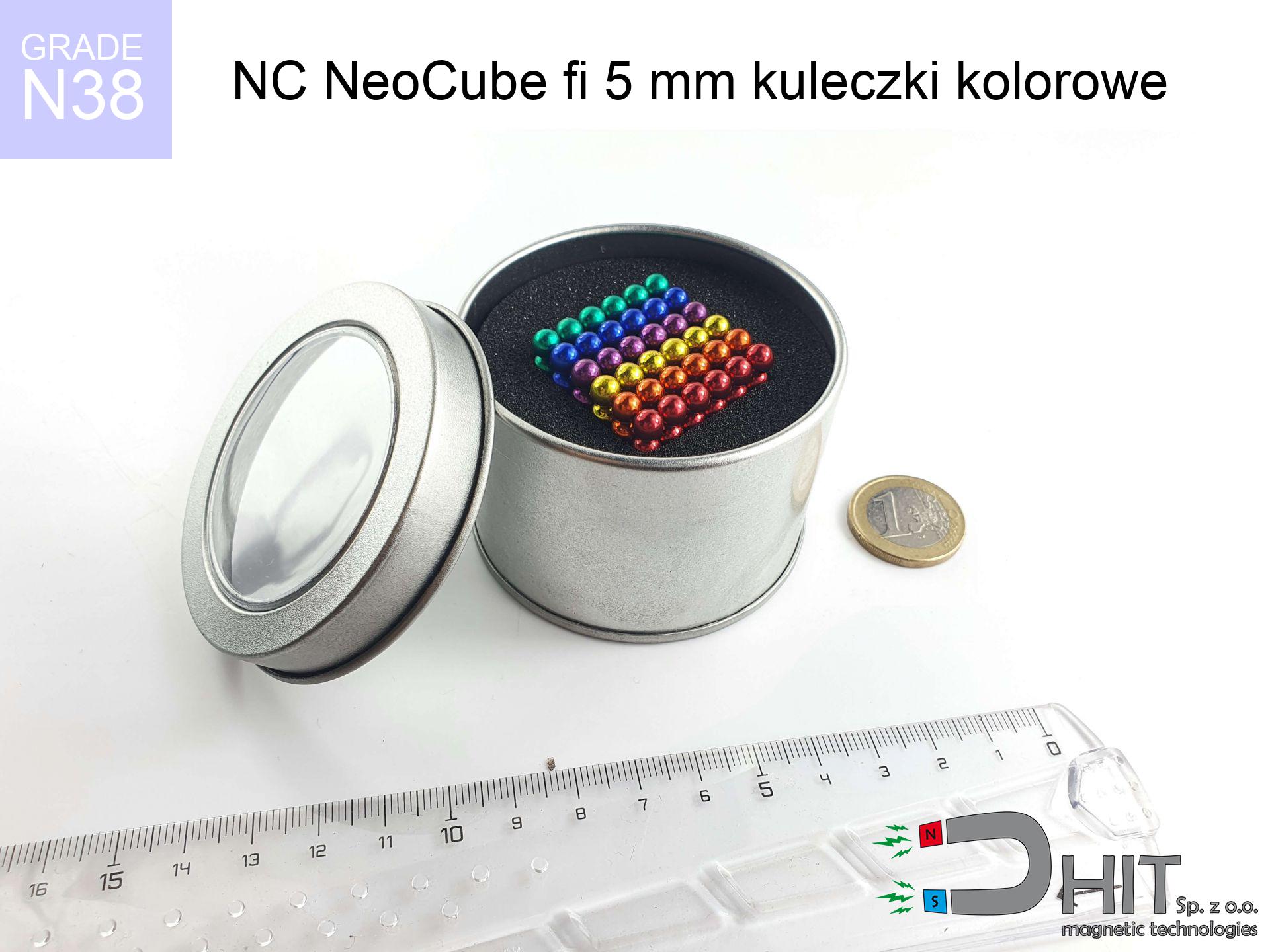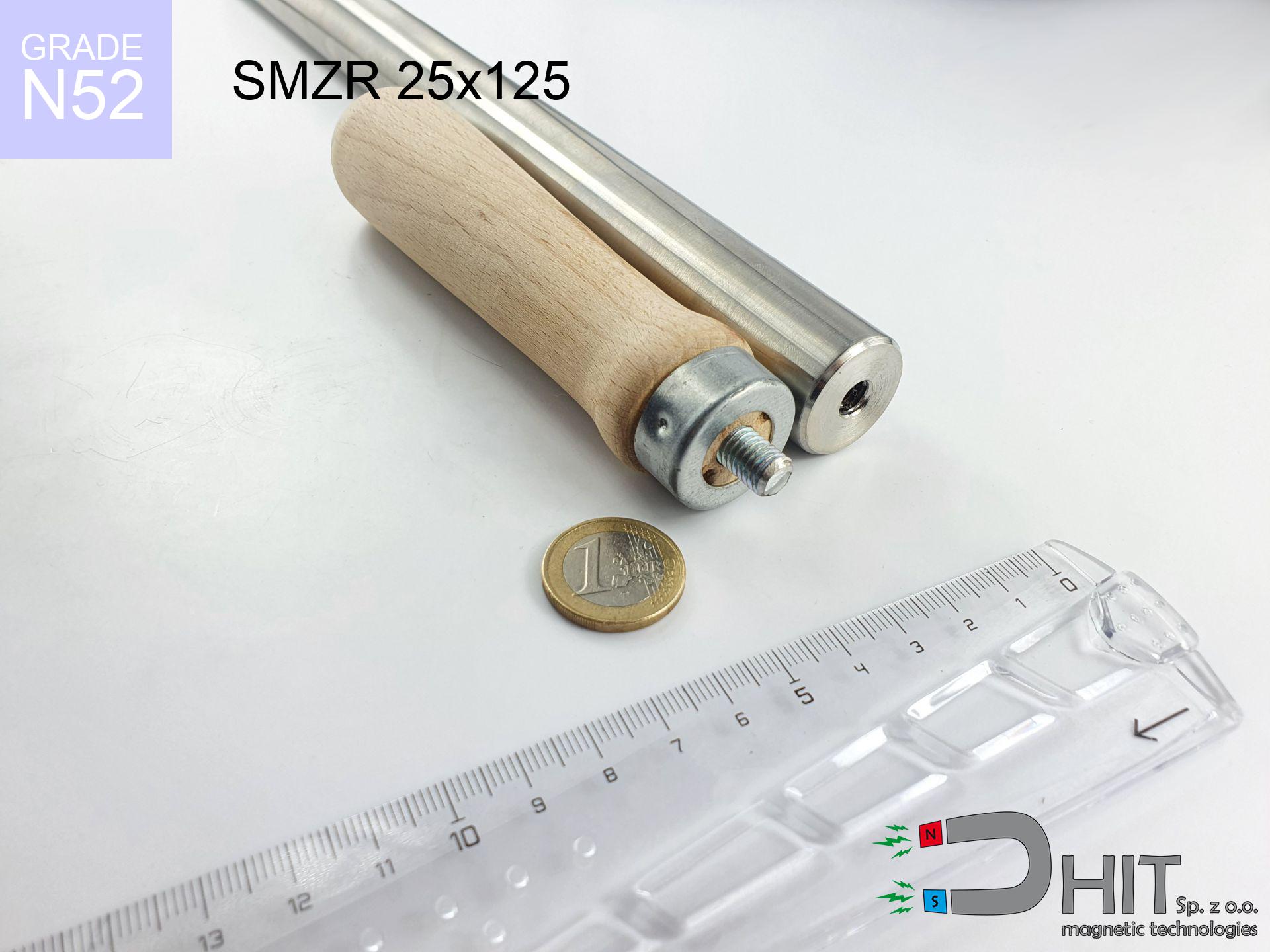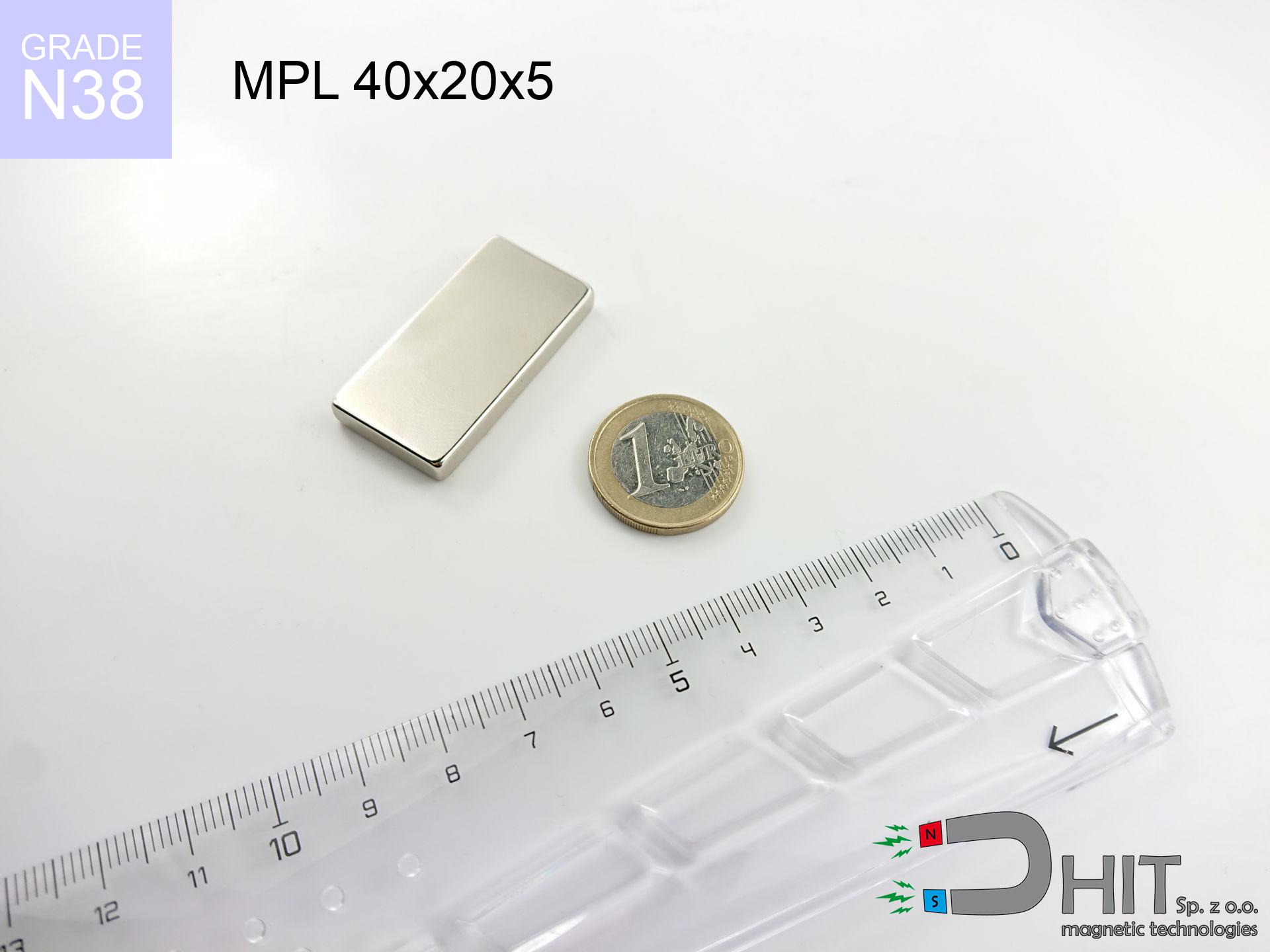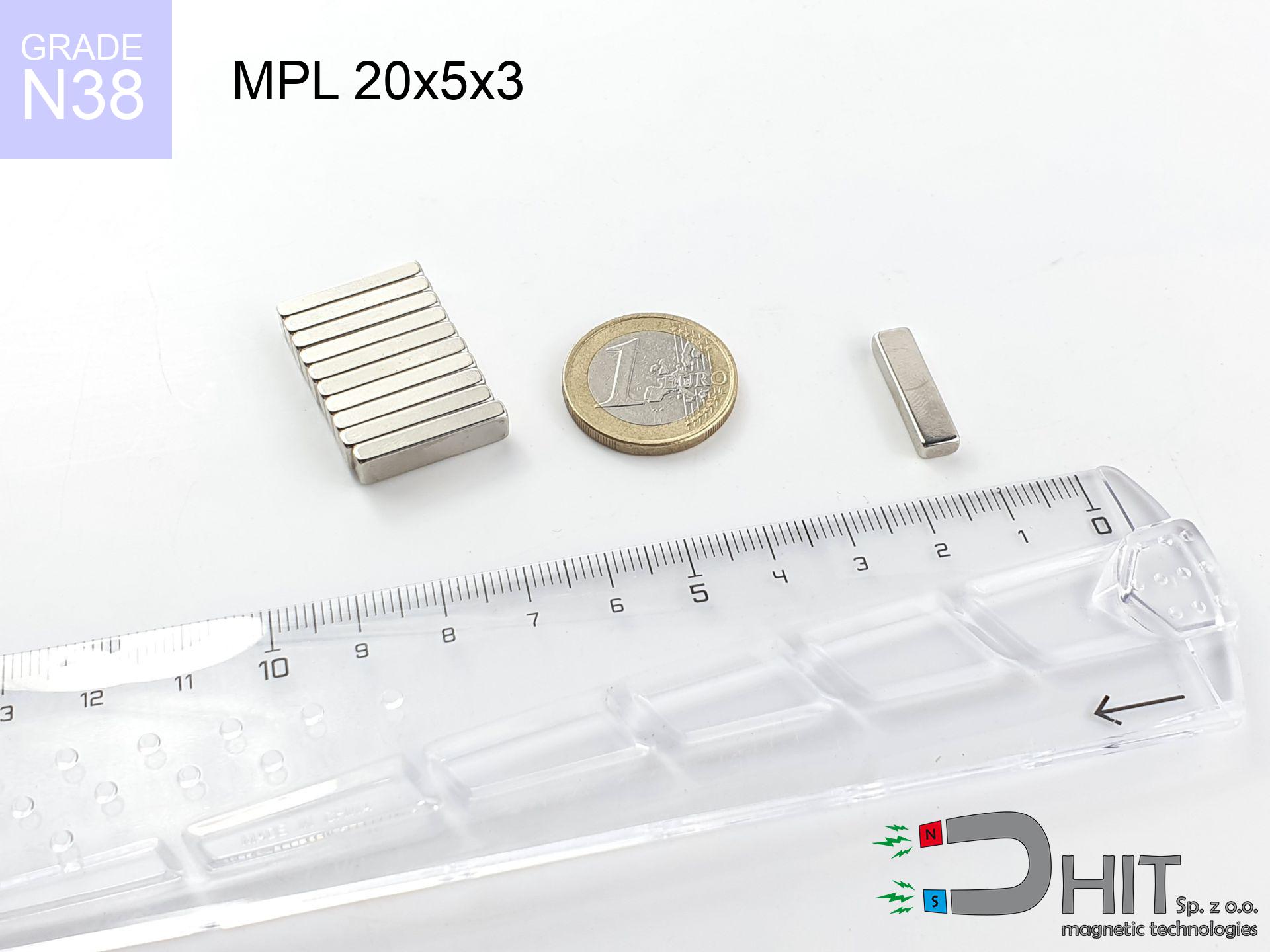NC NeoCube fi 5 mm kuleczki kolorowe / N38 - neocube
neocube
Catalog no 120229
GTIN: 5906301812685
Weight
145 g
Magnetization Direction
↑ axial
Coating
[NiCuNi] nickel
49.99 ZŁ with VAT / pcs + price for transport
40.64 ZŁ net + 23% VAT / pcs
bulk discounts:
Need more?Need help making a decision?
Call us
+48 22 499 98 98
otherwise get in touch through
request form
our website.
Weight along with structure of neodymium magnets can be analyzed with our
magnetic mass calculator.
Orders placed before 14:00 will be shipped the same business day.
NC NeoCube fi 5 mm kuleczki kolorowe / N38 - neocube
Magnetic properties of material N38
Physical properties of NdFeB
Shopping tips
Advantages and disadvantages of neodymium magnets NdFeB.
In addition to their immense field intensity, neodymium magnets offer the following advantages:
- They retain their magnetic properties for almost ten years – the drop is just ~1% (based on simulations),
- They are highly resistant to demagnetization caused by external magnetic fields,
- Because of the lustrous layer of gold, the component looks high-end,
- The outer field strength of the magnet shows advanced magnetic properties,
- With the right combination of magnetic alloys, they reach increased thermal stability, enabling operation at or above 230°C (depending on the structure),
- With the option for tailored forming and personalized design, these magnets can be produced in multiple shapes and sizes, greatly improving design adaptation,
- Key role in new technology industries – they serve a purpose in computer drives, electromechanical systems, medical equipment or even high-tech tools,
- Thanks to their concentrated strength, small magnets offer high magnetic performance, in miniature format,
Disadvantages of rare earth magnets:
- They can break when subjected to a heavy impact. If the magnets are exposed to external force, we recommend in a protective case. The steel housing, in the form of a holder, protects the magnet from damage and additionally strengthens its overall robustness,
- They lose field intensity at elevated temperatures. Most neodymium magnets experience permanent decline in strength when heated above 80°C (depending on the dimensions and height). However, we offer special variants with high temperature resistance that can operate up to 230°C or higher,
- Magnets exposed to moisture can degrade. Therefore, for outdoor applications, it's best to use waterproof types made of non-metallic composites,
- Using a cover – such as a magnetic holder – is advised due to the challenges in manufacturing fine shapes directly in the magnet,
- Safety concern from tiny pieces may arise, if ingested accidentally, which is notable in the protection of children. It should also be noted that small elements from these devices have the potential to complicate medical imaging when ingested,
- Due to the price of neodymium, their cost is considerably higher,
Caution with Neodymium Magnets
Neodymium magnets can demagnetize at high temperatures.
While Neodymium magnets can lose their magnetic properties at high temperatures, it's important to note that the extent of this effect can vary based on factors such as the magnet's material, shape, and intended application.
Magnets made of neodymium are extremely delicate, they easily crack and can become damaged.
Neodymium magnets are extremely fragile, and by joining them in an uncontrolled manner, they will break. Neodymium magnets are made of metal and coated with a shiny nickel surface, but they are not as hard as steel. At the moment of connection between the magnets, small metal fragments can be dispersed in different directions.
Neodymium magnets are the most powerful, most remarkable magnets on earth, and the surprising force between them can surprise you at first.
Please review the information on how to handle neodymium magnets and avoid significant harm to your body, as well as prevent unintentional damage to the magnets.
Neodymium magnets should not be in the vicinity youngest children.
Remember that neodymium magnets are not toys. Do not allow children to play with them. They can be a significant choking hazard. If multiple magnets are swallowed, they can attract to each other through the intestinal walls, causing severe injuries, and even death.
Dust and powder from neodymium magnets are highly flammable.
Do not attempt to drill into neodymium magnets. Mechanical processing is also not recommended. If the magnet is crushed into fine powder or dust, it becomes highly flammable.
Keep neodymium magnets away from GPS and smartphones.
Magnetic fields interfere with compasses and magnetometers used in navigation for air and sea transport, as well as internal compasses of smartphones and GPS devices.
Under no circumstances should neodymium magnets be placed near a computer HDD, TV, and wallet.
Neodymium magnets produce intense magnetic fields that can destroy magnetic media such as floppy disks, video tapes, HDDs, credit cards, magnetic ID cards, cassette tapes, etc. devices. They can also destroy devices like video players, televisions, CRT computer monitors. Do not forget to keep neodymium magnets away from these electronic devices.
Keep neodymium magnets away from people with pacemakers.
Neodymium magnets generate strong magnetic fields. As a result, they interfere with the operation of a pacemaker. This happens because such devices have a function to deactivate them in a magnetic field.
The magnet is coated with nickel. Therefore, exercise caution if you have an allergy.
Studies clearly indicate a small percentage of people who suffer from metal allergies such as nickel. An allergic reaction often manifests as skin redness and rash. If you have a nickel allergy, try wearing gloves or avoid direct contact with nickel-plated neodymium magnets.
It is crucial not to allow the magnets to pinch together uncontrollably or place your fingers in their path as they attract to each other.
In the situation of holding a finger in the path of a neodymium magnet, in that situation, a cut or even a fracture may occur.
Safety rules!
Please see the article - What danger lies in neodymium magnets? You will learn how to handle them properly.








